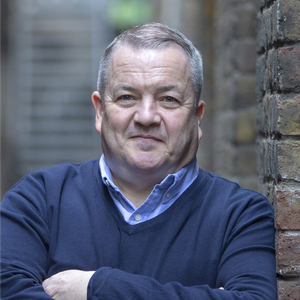
Ian Whybrow
Applying common sense in an increasingly complicated world.
Member Since
October 2023
Ian has been designing and implementing award-winning wayfinding projects for more than 30 years. His experience spans all aspects of wayfinding design; human behaviours, analysis and strategy; detailed development, product specification and implementation management. He has been running his successful agency Whybrow since 2003.
Ian has vast experience working within many heritage listed environments and buildings of national cultural significance in the UK such as The British Museum, Tate Britain, Brighton Dome, Castle Howard and King’s College London. Indeed, he has (and is) working globally on a variety of cultural and future-facing projects. Naturally there are also a plethora of high level projects that he isn’t allowed to talk about!
In his capacity as a founding member of the UK based Sign Design Society, and member of SEGD, Ian has travelled internationally giving talks and being on panel discussions – he is renowned for his straight talking no-nonsense approach to all things wayfinding and environmental graphic design.
Ian’s role within the practice informs areas of design direction, design team co-ordination, and the implementation of foundational design principles. He is by nature collaborative and works closely with clients, architects and all levels of stakeholder engagement.
As the lead of Whybrow Studio Ian believes that good design is naturally inclusive, and as such he is proud that two of our projects are included in the Royal Insitute of British Architects (RIBA) published book ‘Are you an inclusive designer?’ by Julie Fleck, OBE.
Building a place where people feel they belong is at the heart of the practice. Ian calls it the Sense of Belonging, the title of a series of observational articles on our website. The best outcomes are always when there is alignment with the project beliefs.
Selected notable clients/projects:
King’s College London. 2005–present.
John Lewis Partnership, various. 1997–present. Bloomberg European HQ, London. 2016–2019.
The British Museum, London. 2013–2015.
Tate Britain, London. 2013–2018.
The Lanesborough, London. 2016–present.
Tower Bridge, London. 2015–2019
Turner Contemporary, Margate. 2011–2013.
Central Bank of Iraq, Baghdad. 2014–2016.
University of the Arts London. 2017–present.
King’s School Canterbury. 2018–2020.
National Cathedral of Ghana. 2019–present.
Royal College of Surgeons in Ireland, Dublin. 2017–2019. Al Shaqab Hotel, Doha. 2013–2016.
Royal Pavilion Estates, Brighton. 2015–present.
Camden Town Hall, London. 2018–present.
The Royal Institution, London. 2017–2019.
Akzo Nobel, Suzhou, China. 2005–2007.
Liverpool Philharmonic. 2013–2015.
Manchester Evening News. 2008–2010.
Cisco Systems, Slough. 2003–2005.
Royal Leamington Spa. 2019–2022.
Sligo Town Centre, Ireland. 2020–2022.
University of Dundee. 2020–present.
Warwick Town Centre. 2020–present.
Design Council. 2015–present.
Watford Town Centre. 2020–present.
My super power is
Cutting through the BS in wayfinding and environmental graphic design.
I'm looking for
Companies/people who require wayfinding, strategy and design. The more complicated the better!
Best piece of advice I've ever heard
Simple = Best
Where I find Inspiration
In the architecture around the world
Practice Area
Branded Environments, Placemaking, Public Installation, Strategy/Research/Planning, Wayfinding
Focus Area
Brand, Destination Experiences, Graphic, Signage, Sustainability
Industry
Corporate, Cultural, Education, Museums, Retail, Transportation, Urban + Civic, Visitor Centers, Workplace